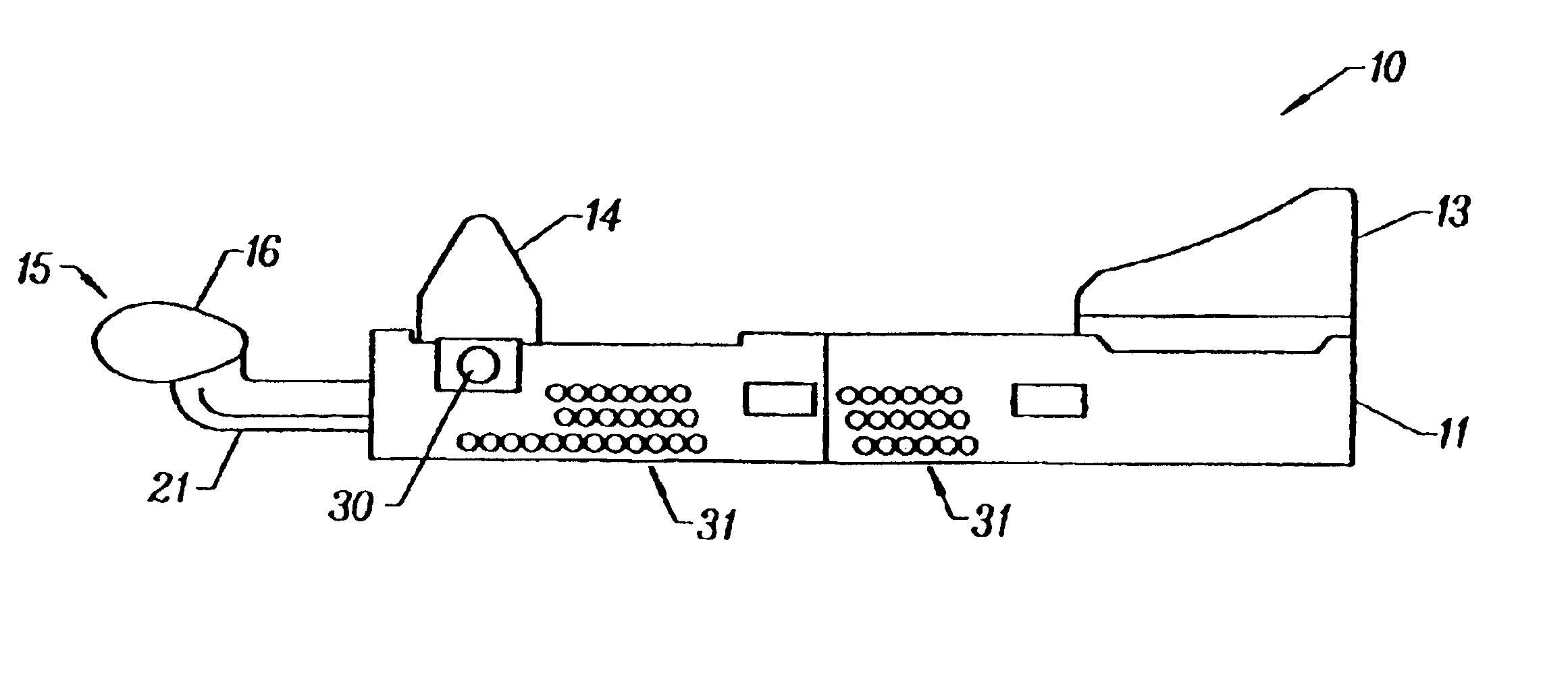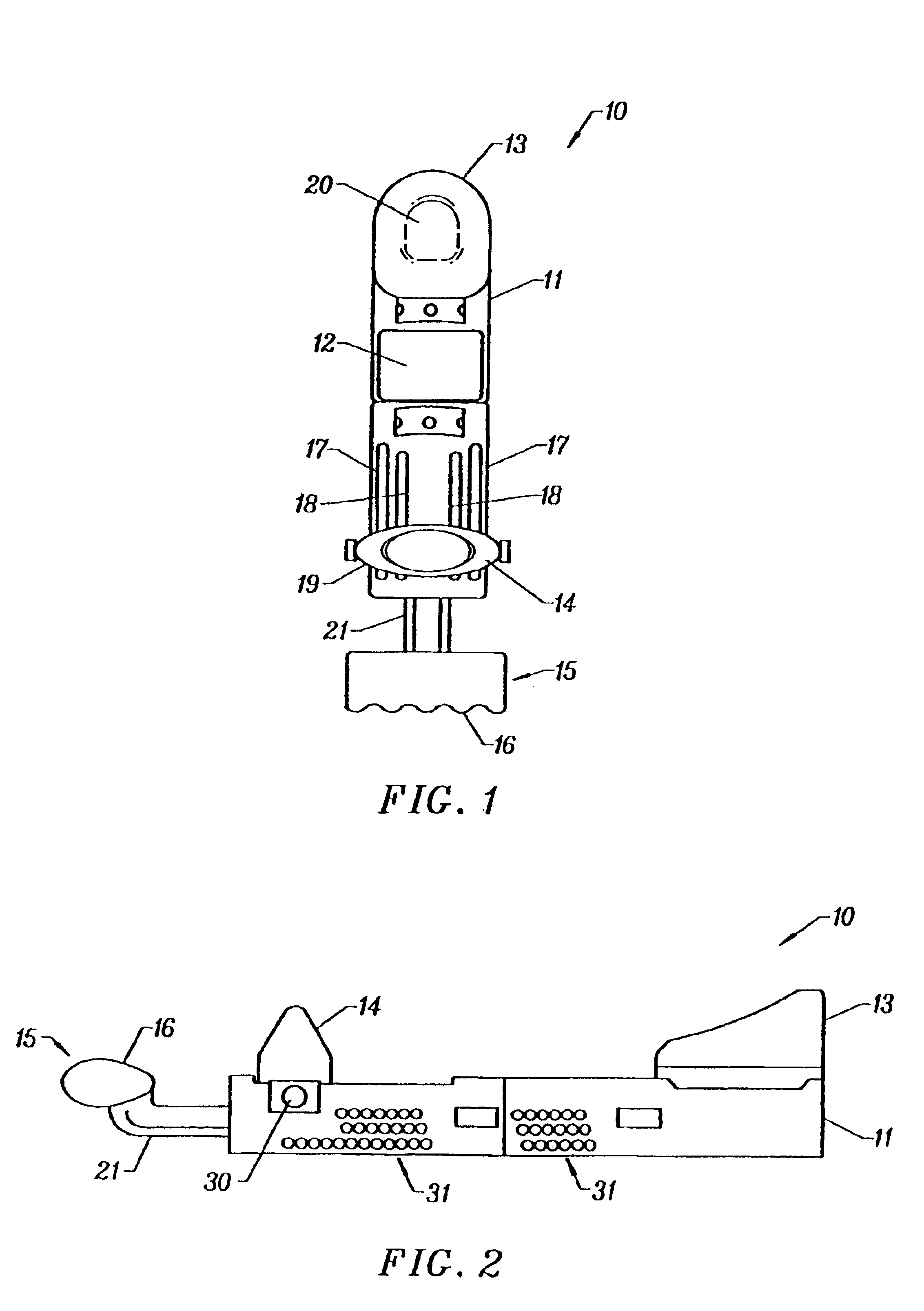Method and apparatus for minimizing spectral interference due to within and between sample variations during in-situ spectral sampling of tissue
a tissue and in-situ spectral technology, applied in the field of spectral analysis of biological analytes, can solve the problems of inability to address the problem of spectral interference caused, decrease in the net analyte signal, and in-vivo measurement of sampling uncertainty, so as to minimize the footprint, minimize the spectral interference related to sampling variations, and minimize the contact with the skin of the arm
- Summary
- Abstract
- Description
- Claims
- Application Information
AI Technical Summary
Benefits of technology
Problems solved by technology
Method used
Image
Examples
Embodiment Construction
Spectroscopic estimation of blood analyte concentration is hampered by spectral interferences. Living human tissue is dynamic by nature and continuously undergoes changes in response to the environment. Physiological changes take place even while light is penetrating the tissue. Furthermore, shifts in the environment, such as temperature changes induce corresponding physiological changes in skin tissue. Interferences in spectral measurements at a tissue measurement site may be due to a variety of factors, among them skin temperature transients, variations in pressure applied to the skin at the measurement site, variations in tissue state, variations in positioning of the site relative to the spectrometer instrument, and others. Such sampling variations cause a reduction in the net analyte signal, which prevents the development of robust calibration models necessary for accurate estimates of biological analyte concentration. A novel subject interface module couples the subject's extr...
PUM
 Login to View More
Login to View More Abstract
Description
Claims
Application Information
 Login to View More
Login to View More - R&D
- Intellectual Property
- Life Sciences
- Materials
- Tech Scout
- Unparalleled Data Quality
- Higher Quality Content
- 60% Fewer Hallucinations
Browse by: Latest US Patents, China's latest patents, Technical Efficacy Thesaurus, Application Domain, Technology Topic, Popular Technical Reports.
© 2025 PatSnap. All rights reserved.Legal|Privacy policy|Modern Slavery Act Transparency Statement|Sitemap|About US| Contact US: help@patsnap.com


